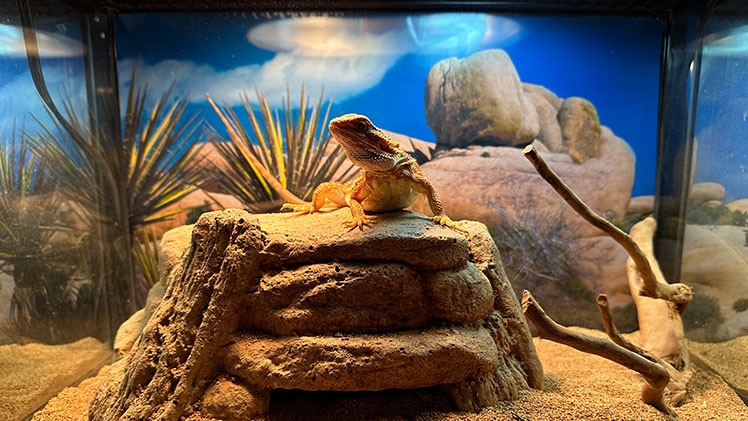Setting up a biologically appropriate enclosure for a reptile can often seem like the most involved aspect of owning one of these animals – and the easiest to mess up. If you keep a few key factors of reptile husbandry in mind, however, you will soon see that setting up an enclosure for our scaly friends can be routine and simple enough to put together when you have the proper resources and knowledge at hand.
Enclosure Size
One of the most important aspects of housing your pet reptiles is going to be giving it a sizable, quality enclosure to live in. The size and shape of your reptile’s vivarium will be entirely dependent on its species. Snakes, for example, will require a rectangular, tank-like structure that has more horizontal room than vertical. For reptiles who naturally like to climb and spend a lot of their time in branches and vines – such as geckos – you need an enclosure that favors more vertical room. The size of your reptile’s enclosure may also change throughout its lifetime, as smaller, juvenile animals should be kept in a smaller tank to not overwhelm it and be introduced to larger ones as it grows.
Accessories
Of course, you’re not going to just throw your new pet into an empty tank and call it a day. For your reptile to thrive in a vivarium that’s conducive to its psychological and physiological needs, you are going to need to fit its enclosure with various accessories. For most reptiles, these include but are not limited to:
- Water dish
- Branches/other climbing accessories
- Substrate
- Hides
- Water dish
- Digital thermometer
- Water dish
- UVA/UVB lights
With these accessories, you will be able to better monitor your reptile’s health, provide it with necessary enrichment and stress relief, and assist it in natural processes such as shedding.
Lighting and Heating
No matter what you choose, every pet reptile is going to need some form of artificial lighting and heating in its enclosure. Heat bulbs and mats are important for your pet’s thermoregulation, and UVA/UVB reptile lights impact their metabolism and immune system. While certain reptiles could live without these specialty lights, they all benefit from them. It is important to not deprive your reptile of important heating and lighting elements in its enclosure, and to make sure they are safely set up in accordance with manufacturer recommendations.
Wrapping Up
Getting a proper habitat set up for your reptile doesn’t have to be difficult. Once you have things in order, you can rest easy knowing that your reptile is enjoying a healthy, full life in a home that fulfills all of its needs. If you do your homework, seek out quality materials, and make sure that what you purchase is species-appropriate, you’ll be well on your way to creating a high quality habitat for your new pet. If you need assistance in placing some of the more complicated aspects of your setup – such as reptile lights or substrate – be sure to consult someone who has more experience in keeping and raising similar pets hertube .

